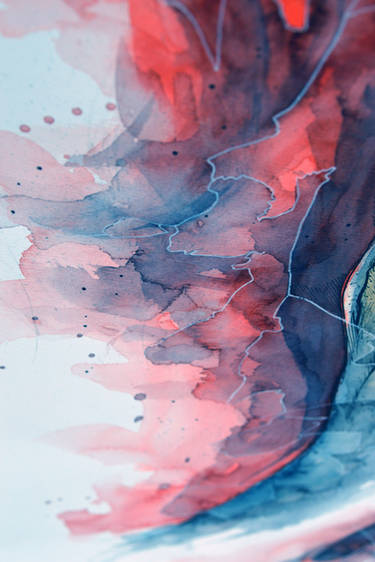PE: Creating art on Commission
At some point in your career as an artist, you'll be asked to create artwork on commission. Whilst it's a wonderful feeling, being able to make money creating art, it's completely different than selling a personal piece you previously completed - accepting a commission means entering a temporary relationship with your client. As simple it may sounds, there's a lot to satisfying customer's needs, sometimes the best you can do is to say no. Being picky regarding which commission you accept is not a bad thing, but try not to automatically turn down commission because it seems to be violating your artistic integrity, it's hard to survive without paid jobs.
✐ 1. Communication and flexibility
This is the key aspect to being able to work on commission. Listen carefully, better to ask a lot of questions before you start working than having to start over. You should be able to respond to concerns and questions too, to the best of your ability and as quickly as possible. The way you communicate with your client reflects on his overall satisfaction with your work and his will to recommend you.
Beware of customers that don't respond or ask for more and more sketches before they even pay the advance. Yes, people are busy and sometimes there's a valid reason why a person replies a month after your initial conversation (by that time, you might not have time for their commission anymore or your price-list has been updated) but there's a good chance this deal will fall apart on their part and you will loose a great deal of time.
✐ 2. Accurate Expectations
Make sure your client is familiar with your work, this can help you avoid some serious commission nightmares. Some people think they want to commission art while they want a copy of something they saw. You know best how far you can go when trying to meet your client's expectations and you should always set ground rules before agreeing to a particular project. Watch the client react to your art, that tells you something about their taste and preferences. Ask them about the aspects of your work they don't enjoy.
Beware of a client with unrealistic expectations and the ones that want to (metaphorically speaking) lead your hand to make every brush stroke of the work. The first will never be satisfied and the latter should paint the commission themselves, you're not a grass-mower to borrow for one afternoon.
✐ 3. Contract
Regardless of whether you're signing a contract on paper or depend on a verbal agreement, make sure you have discussed all aspects of the deal such as payment method, time and amount, completion time and final delivery. I'll be strict here, always require an advance, 1/3 of the total commission cost is a usual - this helps you cover the material, takes the pressure off of you to finish the artwork fast and commits the other party as well. It should be non-refundable, from this point on you are investing your time and labor and your client should understand that.
Beware of not having contract or up-front payment from people you don't know and never dealt with before.
✐ 4. Work in progress
It is recommended to keep informing your client on your progress and send WIP shots of the work. This allows you to address concerns before it's too difficult to do something about them. Encourage dialogue, the other party should feel comfortable asking questions at all times. This part of the process can be really tricky and exceptionally uncomfortable for the artist, since it may disturb your usual working process, but it's very important to learn how to deal with it.
Beware of reacting negatively to potential criticism, this will only stop him from discussing things with you and lead to dissatisfaction with the commission. Also, you should know the best when it's convenient to send WIP's - client does not know your working process and often has no idea how a piece of art evolves during creation, therefore there's a chance they'll get unnecessarily scared when seeing first layers.
✐ 5. Final delivery
Just like you started with a dialogue, end with it. Caring for the finished piece to the last minute is crucial, if you're posting it as a package, keep on talking to the client and make sure it arrived properly. Write a thank you note, after all every customer helps you to survive as an artist.
Beware of bad packaging of your works or providing inaccurate pictures of the commission before the client sees the live result.





